Step by Step: Understanding the Mount Everest Base Camp Distance (2024)
Oh, the thrill is beyond words! I have achieved the unimaginable – Mt Everest Base Camp, once just a distant dream, is now conquered! This adventure is the pinnacle of all the daring feats I have undertaken. Confession time – I made the booking during Easter one year, a period when I found myself at the lowest ebb of my life. Looking back, I am immensely grateful for that decision. Thankfully, my friend Vijay readily agreed to join me on this journey without any hesitation. In this guide, you will find the step-by-step details of Everest Base Camp Distance and other information.

Page Contents
PIN for later reference | Step by Step: Everest Base Camp Distance
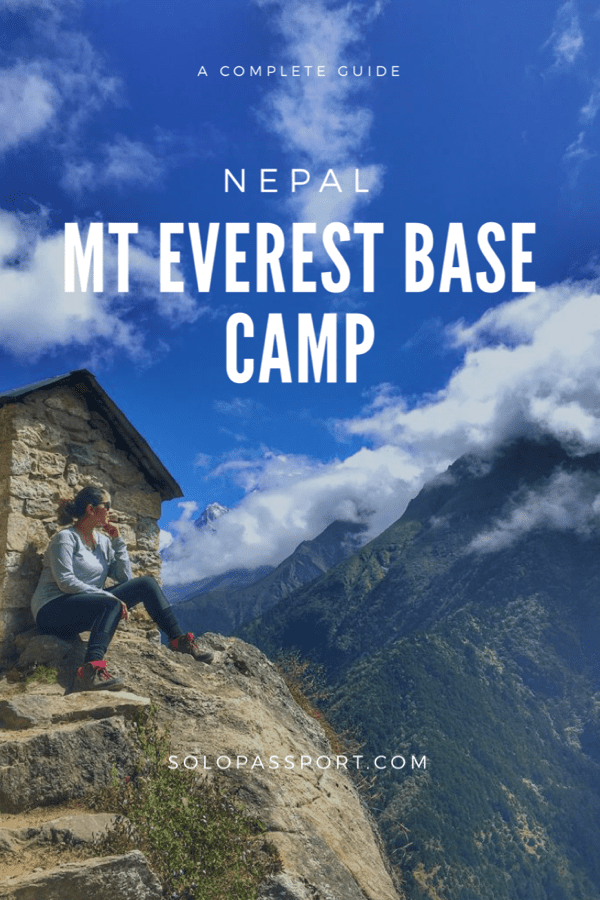
This article may contain affiliate links, meaning if you decide to purchase via my links, I may earn a commission at no additional cost to you. For complete information, please see our affiliate disclaimer here.
About Mount Everest Base Camp
The launchpad for mountaineers embarking on the ascent of Mount Everest, commonly known as Everest Base Camp (EBC), comes in two variants.
- One is accessible from Nepal, known as the South Base Camp, at 5364 meters.
- The other, accessed from Tibet, is the North Base Camp, at 5150 meters.
My friend Vijay and I undertook the journey to the South Base Camp in Nepal.
How to Prepare for Everest Base Camp?
Embarking on the Everest Base Camp journey is no easy feat, demanding meticulous preparation and unwavering commitment. The entire Everest Base Camp distance is approximately 115 kilometers, commencing from Lukla and culminating back in Lukla. The formidable altitude intensifies the challenge.
Over the past two years, I have dedicated almost every weekend to regular hiking, supplementing it with several multiple-day hikes for thorough preparation. Incorporating breathing exercises or yoga into the routine in the months leading up to the hike is a valuable recommendation.
For those who may not possess the physical prowess for trekking but still yearn to witness Everest’s majesty, the Everest Base Camp Helicopter Tour is a viable option. This four-hour tour, originating and concluding in Kathmandu, includes stops at three significant locations: Lukla, Everest View Hotel for breakfast, and Kalapathar—the highest point at 5,545 meters (18,209 feet).
How to Book Everest Base Camp?
Numerous travel agents offer Everest Base Camp hikes, and for our journey, Vijay and I chose Unique Path Trekking. Although I appreciated how Babu (Managing Director) handled situations at the trip’s conclusion, unfortunately, we did not have access to him during the trek. Regrettably, I was not pleased with our guide, Lal, as he insisted on a substantial tip in dollars on the last day. Additionally, he failed to carry any medical supplies during the trek, a critical oversight at high altitudes. Based on my experience, I would not recommend opting for Unique Path Trekking, especially not with Lal as the guide.
Our hike to Mount Everest Base Camp taught us a significant lesson: never compromise on the trekking agency’s quality for a lower price. We encountered numerous issues, primarily from the absence of proper medical supplies that the guide was expected to carry.
The details of the cost are:
- Cost per person: USD 877 or AUD 1185.
Inclusions in the Package are:
- Airport pick-up and drop-off by private vehicle.
- Accommodation is on a twin-sharing basis in guest houses during the trek.
- Domestic flights between Kathmandu and Lukla.
- English-speaking guide.
- Food and drinks.
- Insurance.
- Sleeping bag.
- Trekking permits and paperwork.
- Rescue arrangement.
- Government taxes.
- Porter.
What To Pack for Everest Base Camp?
Packing for Everest Base Camp requires careful consideration due to the challenging terrain and high altitude. The trek spans 11 days, and your items must be suitable for diverse weather conditions. It is crucial to be prepared for the worst-case scenarios.
Hiking Pack (Daypack and Backpack)
The initial lesson I gleaned from my Inca Trail hike emphasized the significance of having two distinct packs:
Day Pack:
- Carried by me.
- It primarily contains a water bottle, snacks, a passport, and cash.
Backpack:
- Carried by the porter.
- Mainly holds clothes and items not needed during the hike.
This dual-pack system proved instrumental in ensuring efficiency and convenience throughout the trek. Other than this important lesson, the previously made list proved effective during the Inca Trail to Machu Picchu. The only additional item I recommend adding electrolytes or energy drinks for enhanced hydration and stamina.
Contents of Day Pack
- Passport secured in a zip-lock bag.
- Poncho or rain gear.
- Insulated Jacket.
- A pair of hiking socks.
- Headlamp or flashlight with charged batteries.
- Sun protection cap.
- Sunglasses.
- Reusable water bottle.
- Toiletries.
- Wet wipes.
- Eco-friendly soap.
- Chapstick.
- Sunscreen.
- Hand sanitizer.
- Safety pins.
- Snacks – Chocolates, wafers, biscuits.
- Personal medication.
- Panadol.
- Prescribed medicines.
- Camera, batteries, and memory cards.
- Phone and phone charger.
- Travel adapter.
- Cash.
- Earplugs.
- Waterproof day pack cover.
- Compass.
Contents of Backpack
- Hiking shirts (4 to 6).
- Hiking pants (2 to 3 pairs).
- Breathable underwear (clean one for each day + an extra pair).
- Thermal top and pants (2 to 3 pairs).
- Fleece jacket.
- Hiking Socks – It is advisable to wear two pairs of socks each time to avoid blisters on the feet (two clean ones for each day + two extra pairs).
- Beanie.
- Shawl (Optional).
- Hand gloves (inner and outer layer gloves).
- Hiking shoes – Crucial; ensure they are comfortable and worn before the hike.
- Flip-flops.
- A few disposable bags to put your dirty clothes in.
- Trekking poles.
- Towel.
- Sleeping bag – It is recommended to rent a sleeping bag from the agency and carry your sleeping bag. The tea houses at higher altitudes can become extremely cold, reaching temperatures as low as -10 degrees Celsius. Two sleeping bags can provide extra insulation and help you stay warm in these chilly conditions.
- Space blanket/Emergency thermal blanket.
- Sleeping pillow.
- Toiletries:
- Toilet rolls.
- Wet wipes.
- Deodorant.
- Eco-friendly soap.
- Toothpaste.
- Toothbrush/tongue cleaner.
- Tweezer/pocket mirror.
- Bug repellent.
- Safety pins.
- Snacks – Ensure sufficient snacks like chocolates and some eateries are carried.
- First aid kit.
- Personal medication.
- Diamox – altitude sickness tablet – prescribed by your doctor.
- Power bank.
- Games (Uno, playing cards).
- Water purification tablets.
- Novel and travel journal.
- Comprehensive Insurance.
- Waterproof backpack cover.
- Candles and matchsticks/lighter.
- Whistle.
Acclimatisation
Acclimatising to the altitude is crucial for this hike, and underestimating its impact can lead to life-threatening experiences. For more information, familiarise yourself with the 10 common high altitude sickness symptoms that can occur among trekkers.
I strongly recommend spending a day or two at Namche Bazaar and a day at Thyangboche to aid in acclimatization.
During our trek, our porter Ashish experienced a life-threatening altitude sickness, necessitating an airlift to the nearest hospital in Lukla as his oxygen levels had dropped to the 20s. I, too, suffered from acute altitude sickness, marked by headaches, vomiting, and loss of appetite. Trust me, this is an experience that is far from enjoyable.
Note: I adhered to the prescribed medication (Diamox) provided by my doctor in Australia, specifically for altitude sickness.
Itinerary and Mount Everest Base Camp Distance Covered on Each Day
The trek commences from Lukla, home to one of the world’s most perilous airports. Lukla Airport is notorious for its challenging conditions, and only a limited number of flights operate at this location. Unfortunately, our flights were canceled consecutively for three days, leading us to opt for a helicopter to proceed with our journey.
Kathmandu to Lukla Transportation options
On the second day of our journey to Kathmandu, my friend Vijay and I found ourselves still at the Kathmandu airport, awaiting our flight to Lukla. After extensive discussions and research at the airport, we discovered that there are primarily three options (well, five, to be precise) to travel from Kathmandu to Lukla.
Note: All costs mentioned above are only for one way. For up-to-date prices, check individual websites.
- Option 1 – Opt for a domestic flight (Sita Airlines) from Kathmandu to Lukla, costing approximately USD 180. This option is more economical and advisable, especially if extra days are available, considering the high likelihood of flight cancellations.
- Option 2 – Choose a domestic flight from Kathmandu to Phaplu, followed by a helicopter journey from Phaplu to Lukla. The cost is approximately USD 180, with an additional charge of USD 150 per person. It’s important to note that we also incurred expenses for our guide.
- Option 3 – Opt for a helicopter from Kathmandu to Lukla. This is the priciest option, with an approximate cost of USD 500 per person (plus additional bank charges of 4%).
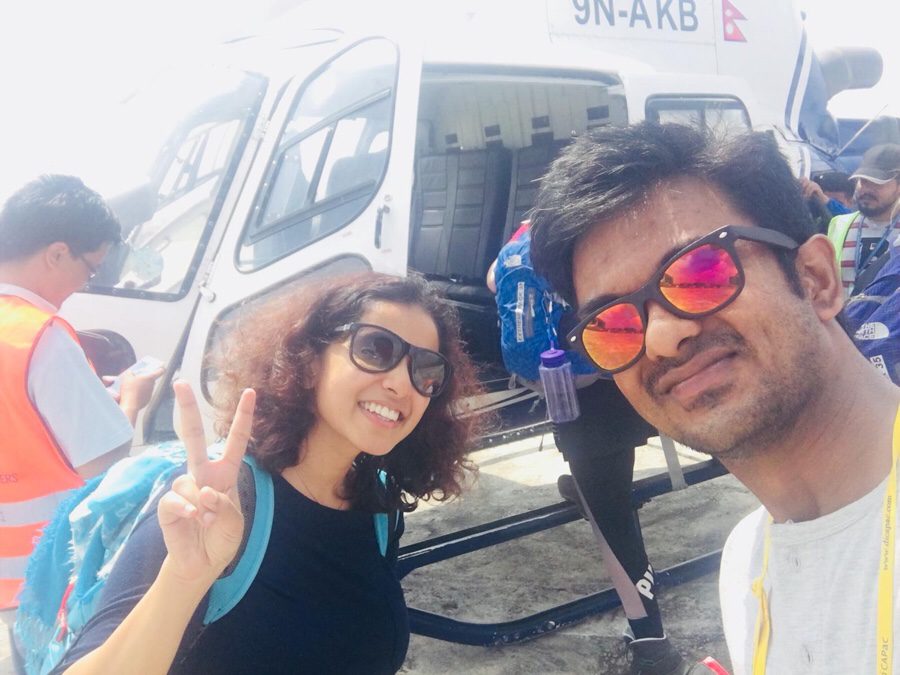
We were also informed about Options 4 and 5 involving road travel.
- Option 4 – Embark on a jeep ride from Kathmandu to Salleri, which spans approximately 9 hours. From Salleri to Phakding, the only viable mode of transportation is by foot, and this trek takes about 3 days. This option, being the longest travel route from Kathmandu to Lukla, was not deemed feasible for us.
- Option 5 – Consider a jeep ride from Kathmandu to Phaplu, followed by a helicopter journey from Phaplu to Lukla. However, this option was also deemed unfeasible for us.
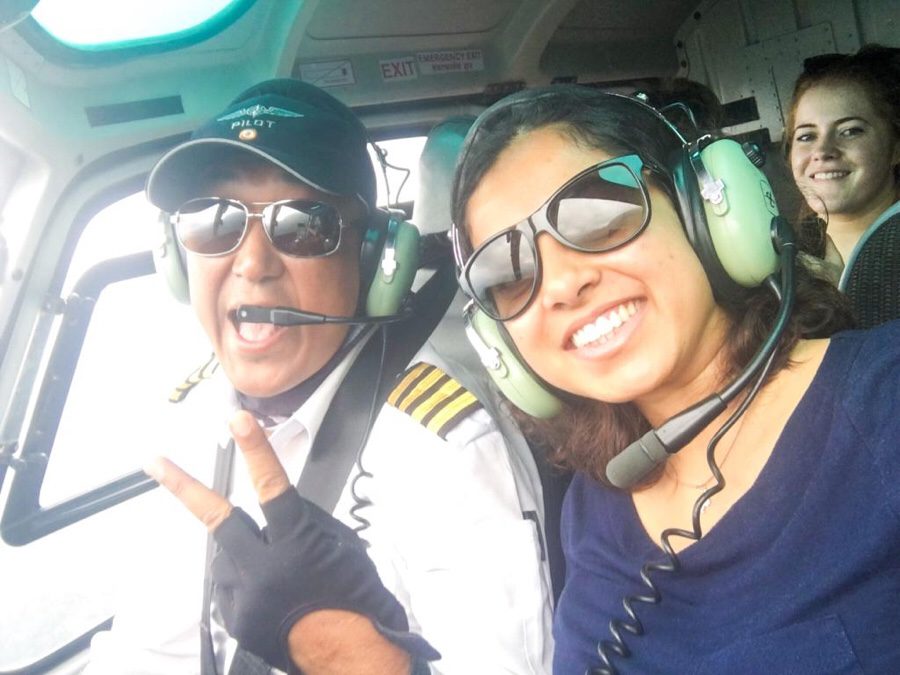
Note: The typical duration of the hike is a minimum of 11 days, with at least 2 days allocated for acclimatisation. However, due to our flight cancellations, we missed 3 days, completing the hike in 9 days. I strongly advise against skipping the designated rest days, as they play a crucial role in acclimatization.
Day 1 – Lukla to Phakding
- Elevation: Lukla (2840 metres) to Phakding (2610 metres)
- Number of hours walked: 3 hours
- Distance covered: 8 kilometres
- Grade: Easy to Moderate
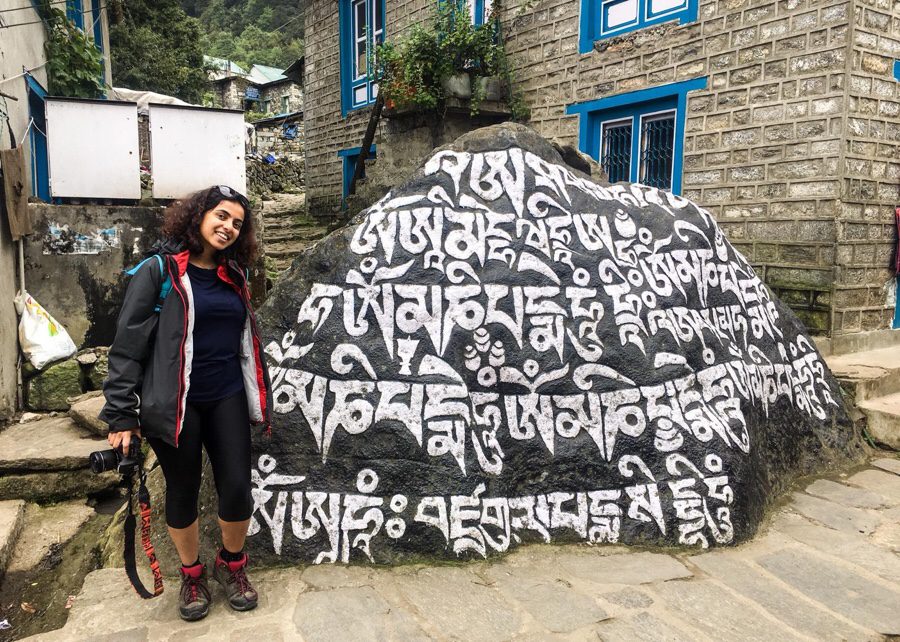
Day 2 – Phakding to Namche Bazaar
- Elevation: Phakding (2610 metres) to Namche Bazaar (3440 metres)
- Number of hours walked: 7 hours
- Distance covered: 12 kilometres
- Grade: Very Difficult

Day 3 – Namche Bazaar to Thyangboche
Note: While I proceeded with my hike, I strongly recommend resting on this particular day.
- Elevation: Namche Bazaar (3440 metres) to Thyangboche (3860 metres)
- Number of hours walked: 6 hours
- Distance covered: 10 kilometres
- Grade: Moderate for first 3 hours and then Very Difficult

PIN for later reference | Everest Base Camp Distance

Day 4 – Thyangboche to Dingboche
Note: Despite continuing my hike on this day as well, I highly recommend taking an additional rest day on this particular day.
- Elevation: Thyangboche (3860 metres) to Dingboche (4410 metres)
- Number of hours walked: 6 hours
- Distance covered: 12 kilometres
- Grade: Moderate
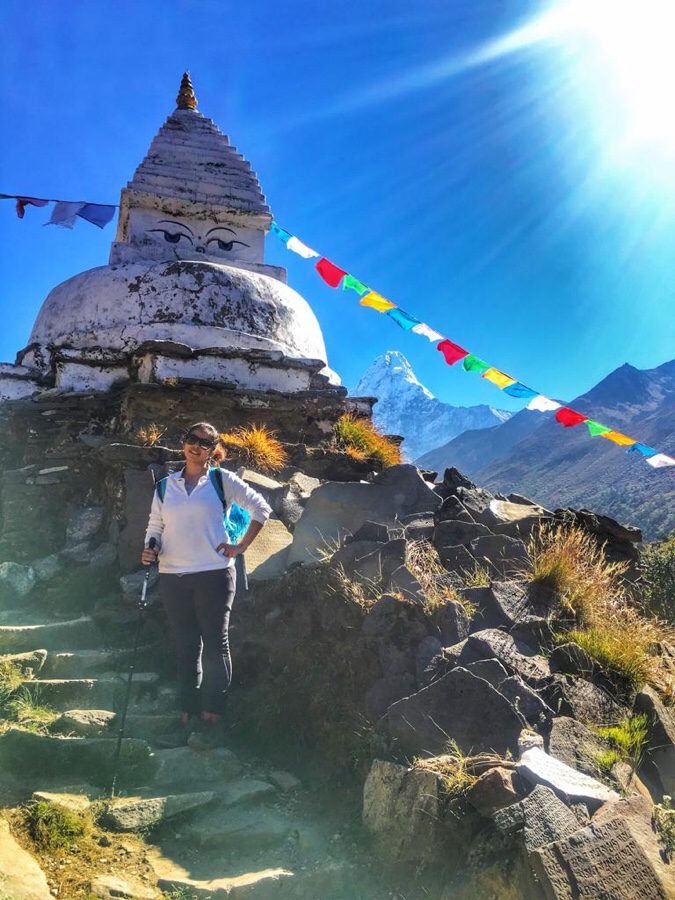
Day 5 – Dingboche to Lobuche
- Elevation: Dingboche (4410 metres) to Lobuche (4910 metres)
- Number of hours walked: 5 hours
- Distance covered: 12 kilometres
- Grade: Difficult

Day 6 – “The Day” Lobuche to Lobuche via Gorakshep and Everest Base Camp
- Elevation: Lobuche (4910 metres) to Gorakshep (5160 metres) to EBC (5364 metres) to Gorakshep (5160 metres) to Lobuche (4910 metres)
- Number of hours walked: 3 hours + 2.5 hours + 2.5 hours + 3 hours
- Distance covered: 4.5 kilometres + 4 kilometres + 4 kilometres + 4.5 kilometres
- Grade: Very Difficult
- This was the hardest day of all the days and I think one of the best decisions that we took was not to stay at Gorakshep.

Day 7 – Lobuche to Pangboche
- Elevation: Lobuche (4910 metres) to Pangboche (3985 metres)
- Number of hours walked: 6.5 hours
- Distance covered: ~12 kilometres (Approximate because I do not have the accurate distance)
- Grade: Moderate

Day 8 – Pangboche to Namche Bazaar
- Elevation: Pangboche (3985 metres) to Namche Bazaar (3440 metres)
- Number of hours walked: 7 hours
- Distance covered: 13 kilometres
- Grade: Moderate

Day 9 – Namche Bazaar to Lukla
- Elevation: Namche Bazaar (3440 meters) to Lukla (2840 meters)
- Number of hours walked: 10 hours
- Distance covered: 19 kilometres
- Grade: Difficult

Emergency and Travel Insurance
Always make sure to acquire comprehensive travel insurance that includes coverage for emergency rescue operations and repatriation. For activities such as mountain hiking up to 6000 meters, an add-on is necessary. I opted for travel insurance from Columbus Direct, including the Sports and Activity Pack B, at a cost of AUD 192 (USD 135).
Update 2023! Registering on the Smart Traveller website is no longer available.
In Australia, we also have a government-provided service where we can pre-inform or pre-register all our travel details through the Smart Traveller website. This ensures that the government is aware of our travel plans, including locations and activities.
Expenses for Mount Everest Base Camp
- Tour – USD 877 or AUD 1185 (per person)
- Flights from Sydney to Kathmandu return – USD 926 or AUD 1313 (per person)
- Hotels at Kathmandu (7 nights) – NPR 21000 or USD 250 or AUD 176 (per person)
- Heli from Kathmandu to Lukla – USD 550 or AUD 780 (per person)
- Heli from Lukla to Kathmandu – USD 315 or AUD 447 (per person)
- Other expenses during the hike (such as food, wifi, mobile charging, and water bottles) – NPR 35000 or USD 294 or AUD 416 (per person)
- Tips – NPR 3500 or USD 30 or AUD 42 (Porter) & NPR 4500 or USD 38 or AUD 54 (Guide) (for two people)
- Donations during hike – NPR 500 or USD 4 or AUD 6 (per person)
- Travel insurance – USD 135 or AUD 196 (per person)
- Snacks – USD 40 or AUD 57 (per person)
Total – USD 3459 or AUD 4672 (per person)
How to Save Money During the Hike?
On average,
- Drinking water costs NPR 80 to NPR 350 per bottle.
- Mobile charging costs NPR 200 to NPR 500 for 1 hour or complete charging (depending on tea houses).
- Wifi costs NPR 500 to NPR 600 for 1 night.
Drinking water constitutes a significant unavoidable expense during the hike. I recommend:
- Take water purification tablets and purify stream water before consumption.
- Carrying a portable camping stove to heat tap water available at tea houses.
Another significant expense was for charging our mobile phones. I recommend:
- Using solar chargers. Attach the chargers to the day pack while hiking to utilize them at night for phone charging.
- Carrying fully charged power banks to ensure continuous phone charging.
Wi-Fi also incurred substantial costs. I recommend:
- Purchasing a local Nepali SIM with data. Surprisingly, our guide had network access at EBC.
- Obtaining a 10 GB Wifi card in Namche Bazaar that can be used at all the higher camps.
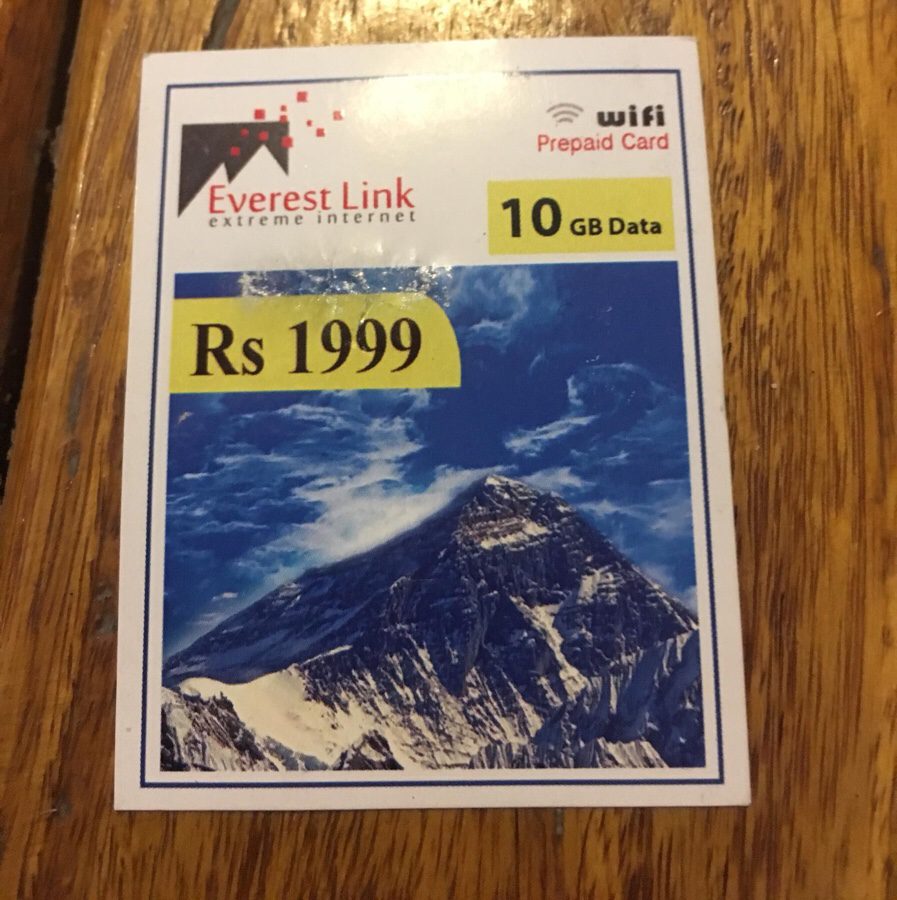
Rubbish
In maintaining the ethos of responsible travel, it’s crucial to keep the trail clean. Dispose of rubbish in the bins provided at each rest area to contribute to the preservation of the environment and ensure the sustainability of the trekking experience.
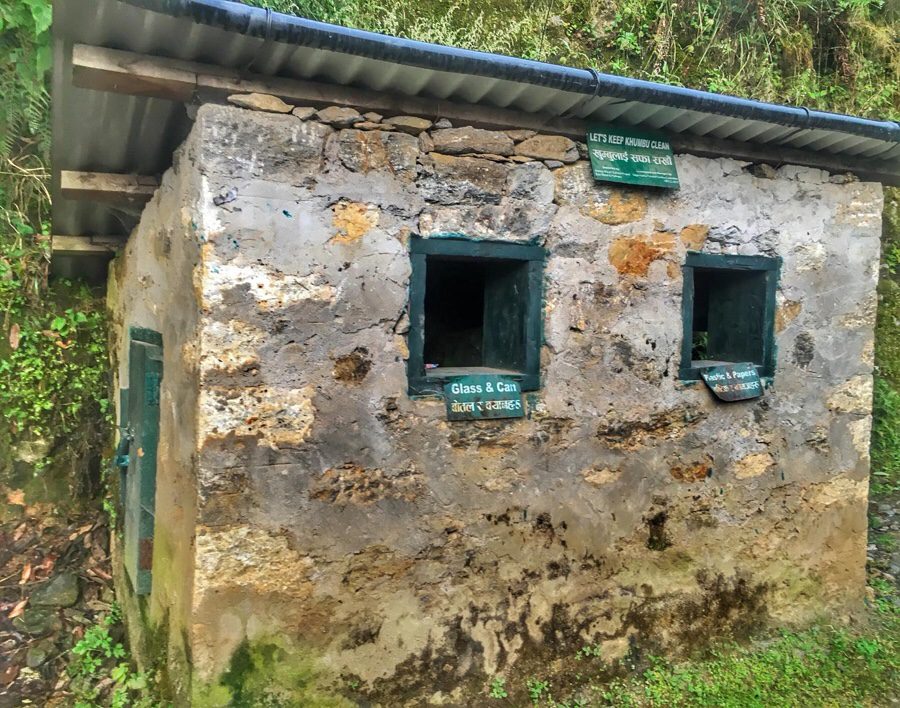
Giving Way to Yaks, Horses, and Donkeys
You will come across numerous Yaks, Horses, and Donkeys transporting goods on the trail. For safety, it’s advisable to position yourself along the mountain side, not the valley side, allowing ample space for these animals to pass. Even a slight push from them can lead to tripping, making the mountainside the safer option.
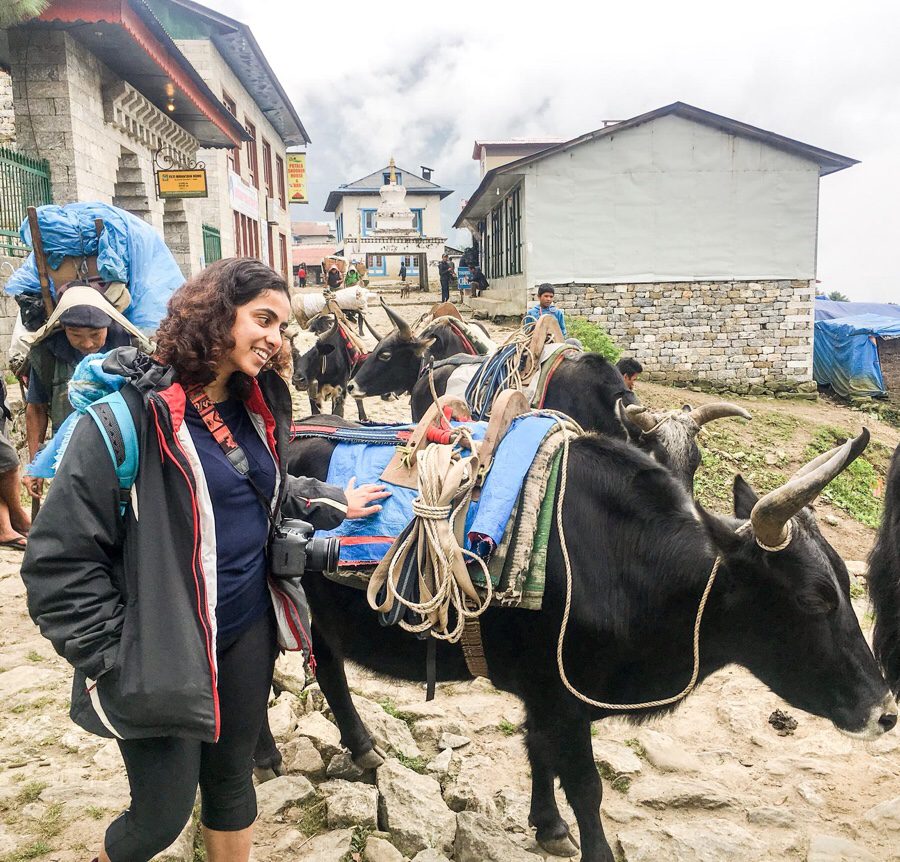
Treating Animals and Kids With Kindness
You will encounter various animals and children along the route. Treating them with kindness is crucial, as they are simple and adorable. Ensure you have treats for the kids to spread joy and warmth during your journey.

Lessons Learned During Everest Base Camp
I consistently document the lessons learned from each of my hikes, and this journey imparted valuable insights.
- Add checked baggage well in advance to avoid last-minute fees; it cost me AUD 77 for 30 kilos.
- Carry snacks in your carry-on for convenience after security and before boarding.
- Be prepared with an extra USD 1000 per person for weather-dependent activities.
- Stay flexible with your travel days.
- Recognize the importance of rest days, especially for high-altitude hikes.
- Fully charged power banks or solar chargers would have been highly beneficial.
- Don’t compromise on the trekking agency for high-altitude treks, even if some are cheaper.
And More Importantly…
Have a positive attitude, go with a smile, and do not panic.
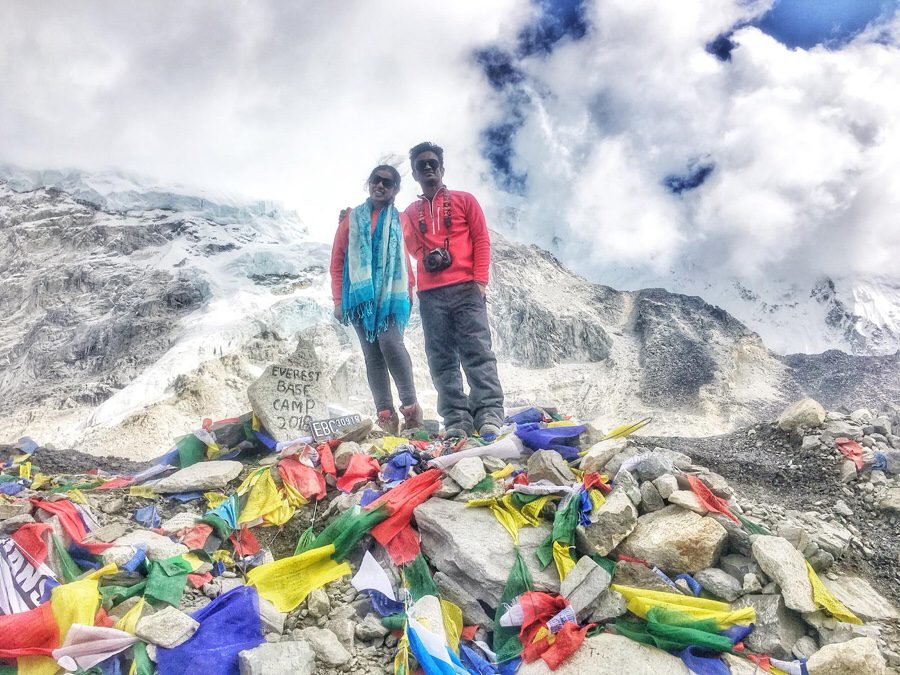
How can you support me?
You know how much I love coffee, so you can buy me a coffee – Buy me Coffee!
Or you can purchase from one of the below travel resources without any extra charge to you:
Travel Resources
Book your flight on Skyscanner.com or Trip.com
Reserve your accommodation on Stay22
Reserve your stay at a hostel on HostelWorld
Use RentalCars or DiscoverCars for hiring self-driven cars
Book your tours and travels or purchase tickets on Viator or GetYourGuide
For a universal SIM card, use DrimSim
Buy comprehensive travel insurance on SafetyWing and WorldNomads
If you liked this article and if it was helpful in your planning or travelling, do share, tweet, or pin this post.
Follow me on Instagram | Facebook | YouTube | Twitter | LinkedIn
Do you have a question? Do you want any suggestions and tips for travel, hikes, and scuba dives? Use the Subscription box below to sign up and get updates by email.
PIN for later reference | Step by Step: Everest Base Camp Distance


